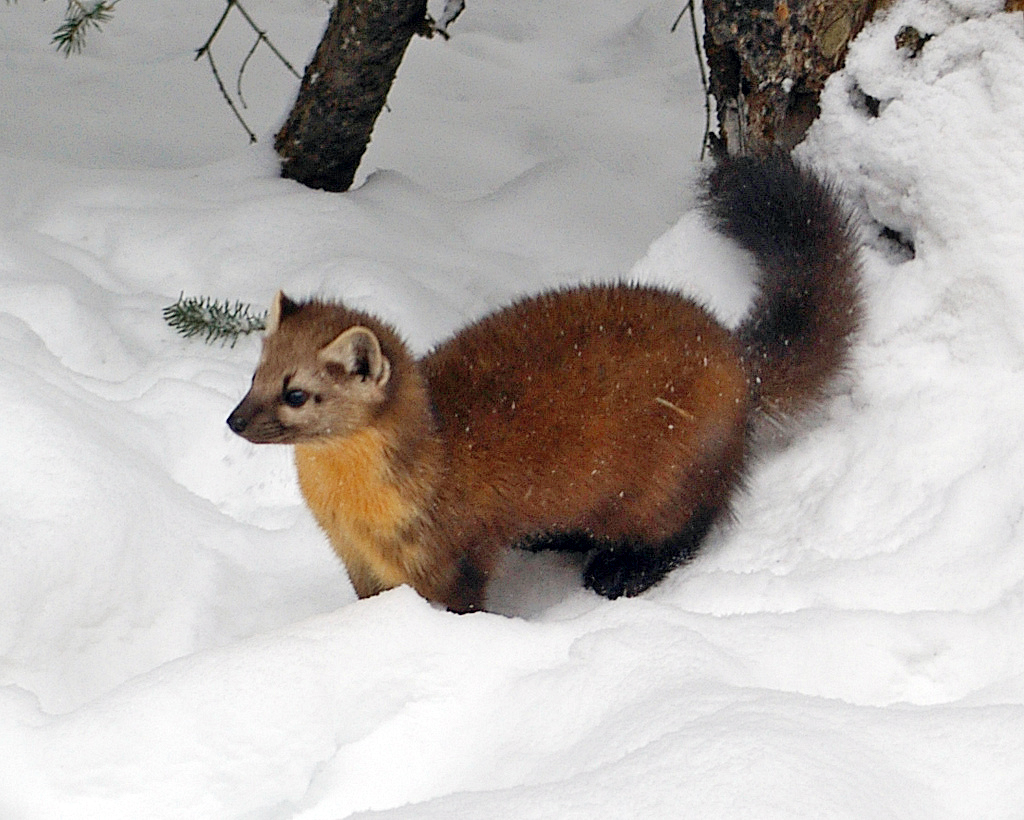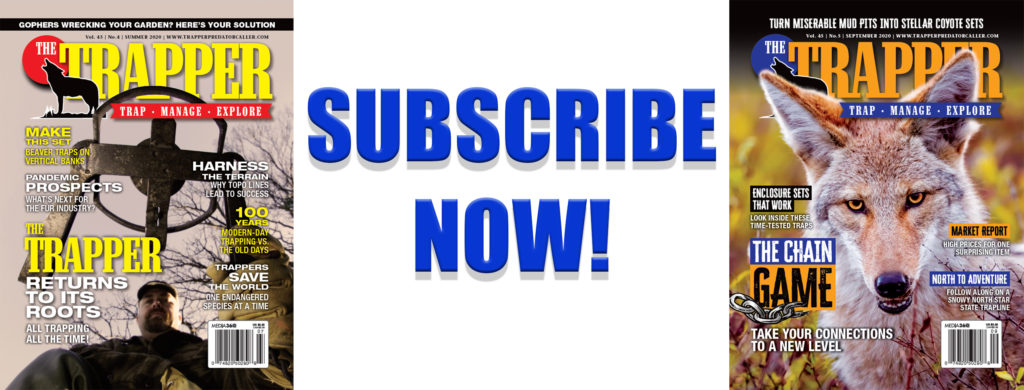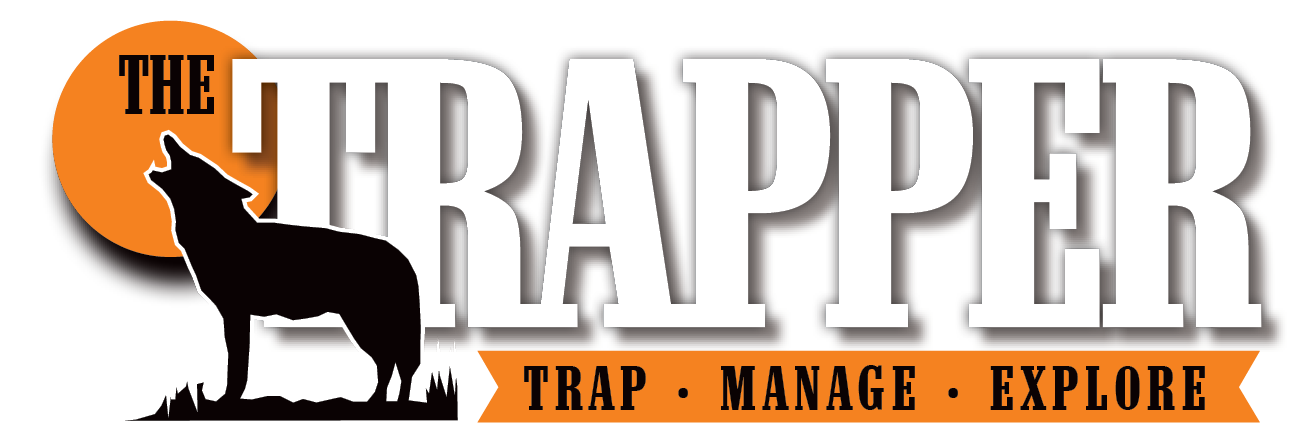By Serge Lariviére
Fall is approaching rapidly, and many trappers are already planning their upcoming trapping season. October seems to go by quickly when you love the outdoors, and there is much to be done before the first days of trapping season.
This past year, prices rose on several species — and that stimulated some interest, especially for beavers. The March 2024 auction at Fur Harvesters Auction Inc. (www.furharvesters.com) was really good in spite of the socio-political climate still being somewhat unstable worldwide. Indeed, the Russia-Ukraine war has now been going on for more than two full years, and Russia’s leader Vladimir Putin was re-elected for a fifth term in March of 2024 — suggesting that the political instability and the conflict with Ukraine will probably continue for a while.

The author with his daughter, Veronique, on the successful beaver line. Photo credit: Serge Lariviere
Luckily, it seems our trade is starting to develop some markets even amid the political uncertainty, and some species have climbed in price in recent years. The recent fur sale held on June 15-17, 2024, at Fur Harvesters Auction in North Bay, Canada, showed a very slight decline in prices overall, suggesting that the upward move we all anticipate is not going to be fast and furious, but maybe more of a slow, gradual recovery.
Beaver pelts continue to sell very well, but prices softened at the recent June sale compared to the March sale. For example, eastern beaver pelts — the best ones on the market, went down on average from $32.57 in March to $25.12 in June. Similarly, western beaver pelts declined from $28.87 in March to $19.18 in June, a very significant price decrease. In their press release (www.furharvesters.com), Fur Harvesters Auction cautions that the felt market may now have reached saturation point, and this means that beaver skin prices may start to drop for this coming season. Castoreum prices also have softened up, and prices of $25-$40 USD per pound are likely realistic for the coming season.
If the beaver market slips downward, it is best for trappers to sell their catch at the first opportunity, as the market likely will be higher at the first few sales and then decrease with time, especially if the demand keeps declining and the harvest remains high. Catch prime fur, but do not store it long. And take good care of those large beaver castor glands, handle them well, do not overdry them, and call around. Lure makers need lots of castoreum, as well, so your best options for selling castor glands may be different from your local fur selling outlets.
River otter declined slightly at the June sale, down to a $28.67 average compared to $32.65 in March 2024. No big changes are expected in this item for the upcoming season, and an overall average of $28-$30 USD is probably realistic. Muskrats continue to struggle at averages between $2 and $2.50. This market has not fully recovered, and the offering is small as few trappers pursue muskrats when the price is below $3 per skin. Wild mink went up in March 2024 with averages of $12-$16, but declined in June with central skins selling for a $9.62 average and northern skins averaging $10.66. Mink trapping was my all-time favorite for many years, and such averages will disappoint mink trappers anywhere. But wild mink will only rise once the ranch mink market recovers fully, and we are not there yet. Do not expect mink prices to rise past the $10-$12 mark for 2024-2025.
Without the full strength of the Russian market, raccoon remains below $10 on average, even for the very best skins from the Northwest. Eastern U.S. skins sold on average for $5.07 at this past June’s sale, a decline from the March sale when eastern skins averaged $7.90. If you trap raccoons on purpose, wait for the late season, catch them when they are fully prime, and do not flood the market with junk skins. Raccoon fur has historically been purchased and worn in Russia, and without the full participation of Russia in our trade, the raccoon market will remain low.
Red foxes and coyotes also declined slightly in June compared to March 2024. Eastern red foxes declined from $16.64 in March to $12.41 in June. Prices between $10-$15 are likely realistic for this coming season, as this market faces very low demand. Coyotes continue to struggle, western pelts sold for $22.43 on average and eastern coyotes for $12.41, compared to $25.73 and $12.11, respectively, in March 2024. The coyote market will likely idle for a while, maybe until a new fashion trend calls for coyote fur. In the meantime, it’s tough to make a profit trapping coyotes. If you do so, explore the market for tanned skins with feet on for wallhangers and the tourist trade. Coyote fur is beautiful, and many people like such skins as decorations or wallhangers — this could be an outlet that is more profitable than the garment trade.
Northern animals such as marten and fisher remain solid, and although few trappers have them on their line, they are a great option in 2024 if you have them. Marten prices remained solid at averages of $53.66, and although it declined slightly compared to March 2024, prices should remain stable or slightly rise this coming season. Fishers also remain very stable, with the June sale reporting averages of $63.01 for males, and $51.96 for the smaller but silkier females.
Lynx and bobcat remain very stable, as well. Canada lynx sold on average for $139.54 in June compared to $140.96 in March. Bobcats, the most luxurious of all of the skins we harvest, sold at $451.59 average for western pelts, a slight dip from the $501.21 average of March 2024. The top lot of bobcat pelts at Fur Harvesters sold for $2,000 USD per skin for a manufacturer in Istanbul, Turkey. Western cats, with their beautiful white bellies and well-defined black spots, will always find buyers, and those who have access to western cats will do well again in 2025.
Taxidermy and wall-hanging items such as wolverines, wolves, bears, badgers, colored foxes and even skunks seem to go up in price every year — probably because the demand for these skins exceeds what is being produced. Skunks amaze me — their prices in June being $13.25 on average, which is higher than the best average for raccoons! At such prices, I wonder when is someone going to start trapping skunks and consider raccoons as a by-catch? But even for skunks — or wallhangers of any kind — prime fur is key. Do not rush to set traps out simply because trapping season is open. In these years of struggling fur prices, the best we can do to help things out is to catch fur when it is prime, and to not flood the market with junk goods. Nobody makes money handling two-dollar ‘coons, but prime fur almost always finds a market.
October is a good month for planning your trapping season, so make plans to have fun and catch some prime fur! With cautious optimism, we should continue to see our markets slowly recover, and with a bit of luck, some fur animals will advance in price!




